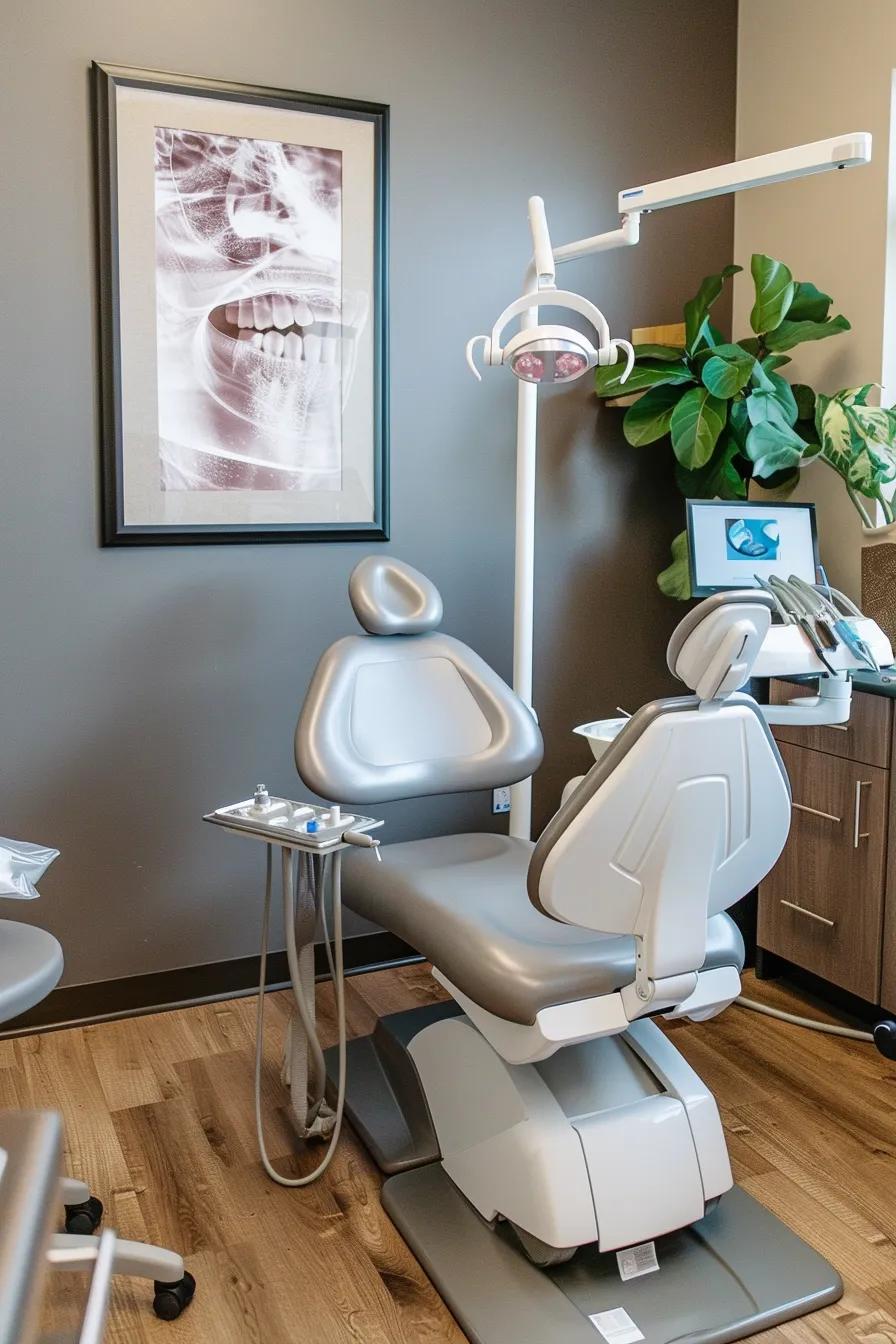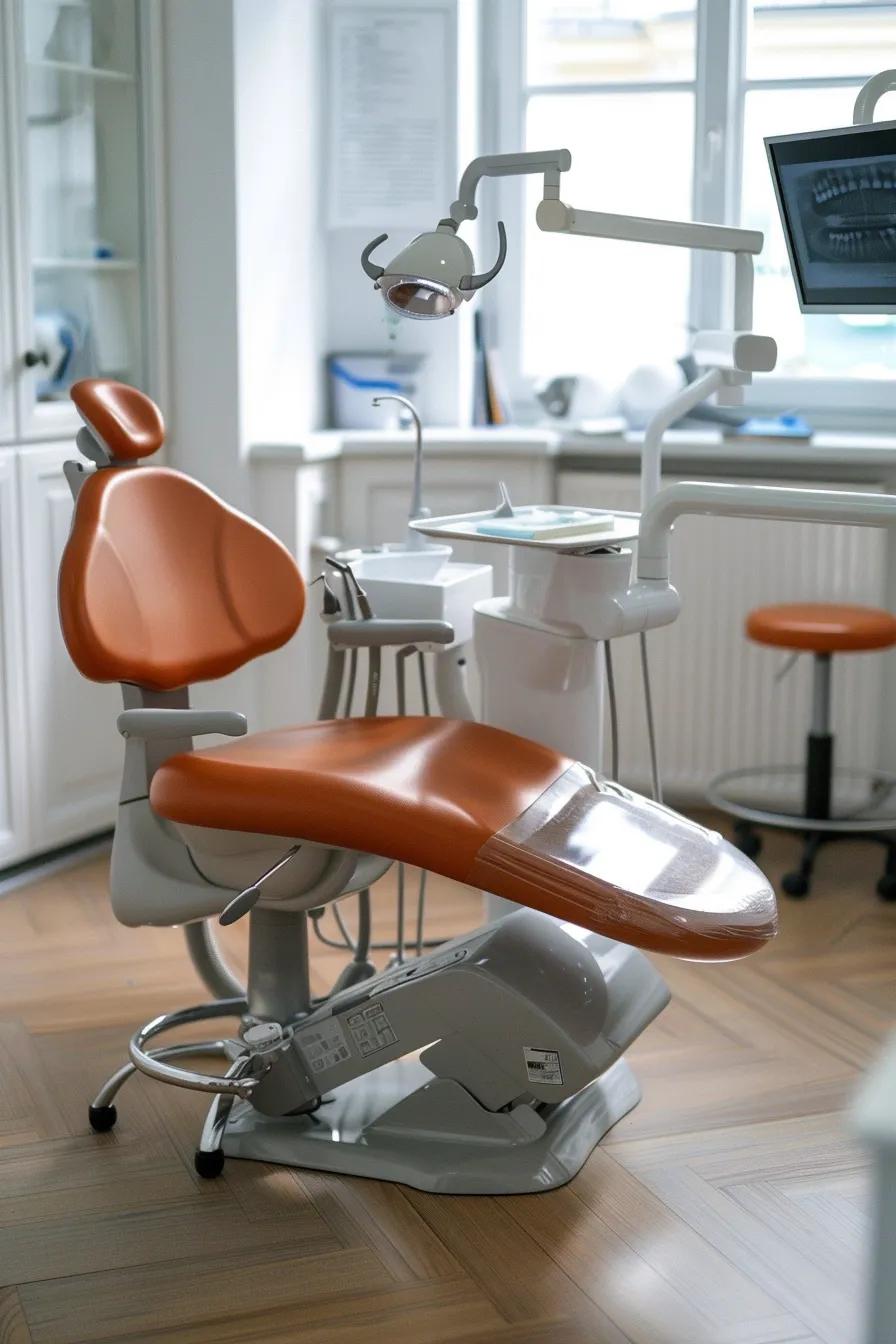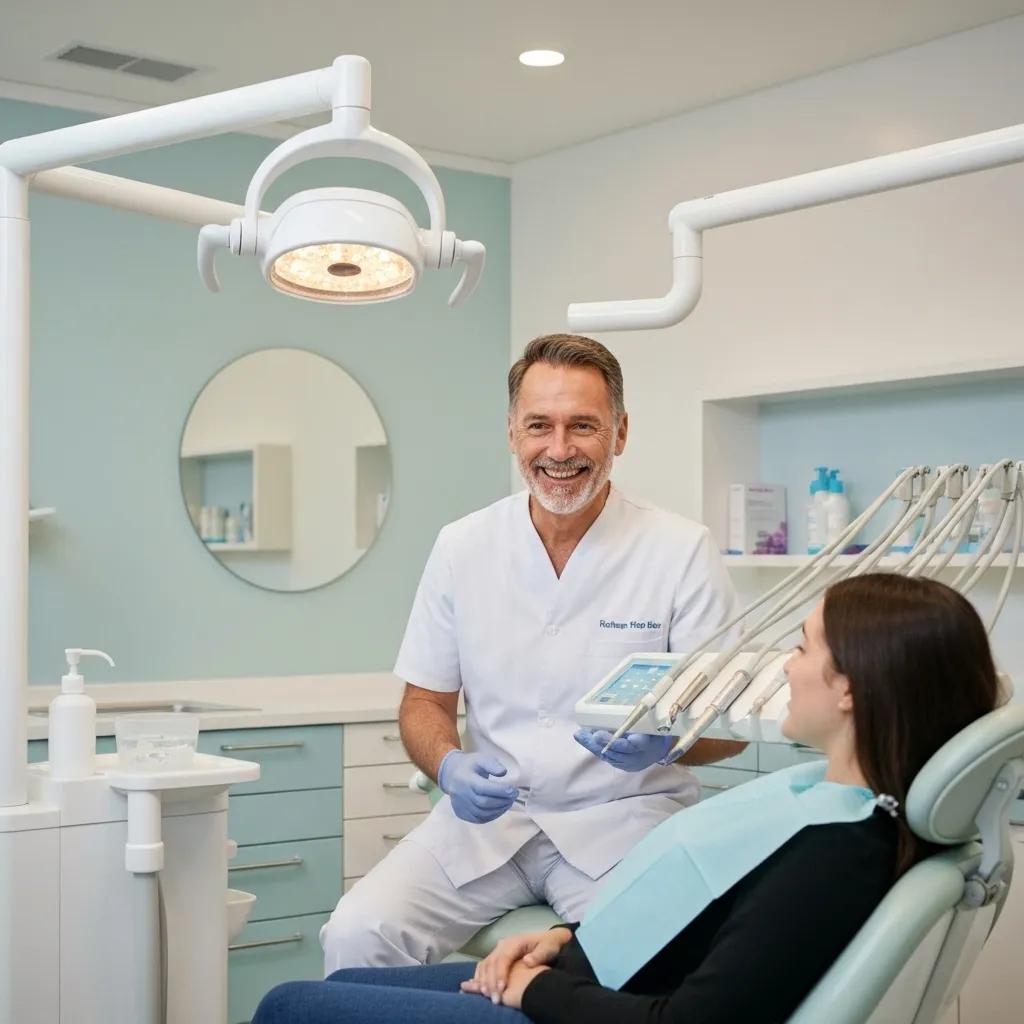Local SEO Strategies for Dentists to Attract More Patients
Local SEO Strategies for Dentists are the cornerstone of attracting new patients to your clinic and outshining local competitors. By targeting geo-specific search queries, Local SEO ensures that people seeking “dentist near me” in Sydney, Melbourne or Brisbane discover your practice first. In this guide, we’ll define what local search optimisation entails, explain why it’s essential for Australian dental clinics, and outline step-by-step tactics—from Google Business Profile setup to advanced multi-location strategies. You’ll learn how to harness Google Business Profile features, manage online reviews effectively, conduct targeted keyword research, build authoritative citations, strengthen your website’s on-page SEO, and scale across multiple branches—all backed by real-world examples and clear action plans. Alongside these insights, discover how Local SEO for Dental Practices can seamlessly integrate with your in-house efforts to drive sustainable patient acquisition.
What Is Local SEO and Why Is It Essential for Dental Practices in Australia?
Local SEO is the practice of optimising your dental clinic’s online presence to rank prominently for geographically-relevant search queries. By aligning your website, directories and business profile with location-based signals, you connect directly with prospective patients in your service area. For example, a family dentist in Perth using local schema markup and consistent citations sees more appointment bookings. Integrating transforms casual browsers into genuine enquiries, ensuring your practice appears in Google’s Local Pack when searchers look for “dental implants Sydney” or “child dentist near me.”
How Does Local SEO Impact Dental Patient Acquisition?
Local SEO impacts patient acquisition by increasing your visibility in map results and organic listings—channels where 76 percent of mobile users select a business within 24 hours. Optimising for proximity, relevance and prominence aligns your practice with searcher intent, driving more calls, website visits and direction requests. This targeted exposure directly converts local searchers into booked appointments.
What Are the Key Benefits of Local SEO for Dentists?
- Enhanced Map Visibility – Secures placement in the Local Pack above organic listings.
- Increased Foot Traffic – Converts “near me” searches into in-office visits.
- Higher Appointment Requests – Boosts click-to-call and online booking rates.
- Improved Trust Signals – Accumulates positive reviews and displays star ratings.
- Competitive Differentiation – Showcases service offerings and opening hours prominently.
How Does Local Search Behaviour Influence Dental Marketing?
Local search behaviour—driven by mobile usage, voice queries and “near me” intent—reshapes dental marketing by prioritising immediacy and convenience. Patients now expect to see up-to-date hours, live booking links and direct messaging options. Understanding these behaviours guides your content strategy, ensuring landing pages, Google Posts and website CTAs match evolving search patterns and drive higher conversion rates.
How to Optimise Your Google Business Profile for Dentists to Maximise Local Visibility

A Google Business Profile is a free directory listing that acts as your digital storefront in local search. Optimising this profile ensures accurate practice information appears in Maps and the Local Pack, driving qualified patient leads. For instance, verifying your address and categorising services correctly can increase GBP views by up to 2× within weeks. are essential to maximise its effectiveness.
What Are the Steps to Set Up and Verify Your Dental Google Business Profile?
- Claim or create your profile by logging into Google Business Profile Manager.
- Enter accurate practice name, address and phone number (NAP).
- Select “Dentist” and service subcategories (e.g., “Dental Implants,” “Orthodontics”).
- Upload high-quality images of your clinic exterior, treatment rooms and team.
- Request a verification postcard or phone call from Google and confirm your code promptly.
Completing these steps ensures Google recognises and trusts your listing, enabling further optimisation.
How to Craft an Engaging and SEO-Friendly Dental Business Description?
An SEO-friendly business description balances clear patient-focused messaging with relevant keywords: local seo.
- Begin with services: “Smith Family Dental offers preventive care, cosmetic dentistry and emergency treatments.”
- Incorporate location signals: “Based in Manly, NSW, our team…”
- Highlight unique value: “Our state-of-the-art intraoral scanning reduces chair time by 30 percent.”
- Include a soft CTA: “Call today to schedule your first consultation.”
This approach improves relevance for search engines while enticing potential patients.
How Can Google Posts and Media Enhance Your Dental Practice Profile?
Publishing Google Posts with promotions, blog highlights or event announcements keeps your profile active and engaging. Embedding procedure photos and short videos builds credibility and encourages clicks. For example, a “New Patient Special” Post can generate 20 percent more booking clicks. Regular updates signal freshness to both users and Google’s algorithm.
What Are Advanced Google Business Profile Features Dentists Should Use?
| Feature | Function | Patient Benefit |
|---|---|---|
| Messaging | Real-time chat directly in GBP | Immediate answers to appointment queries |
| Booking Integration | Direct “Book Now” links via scheduling partners | Reduces friction in appointment scheduling |
| Service Showcase | Detailed list of treatments with pricing graphs | Educates patients before they call |
| Q&A Section | Public Q&A where you provide authoritative answers | Builds trust and reduces repetitive inquiries |
How to Manage Online Reviews and Reputation for Dental Practices Effectively

Online reviews serve as social proof that influences 75 percent of patients before booking a dentist. Proactive reputation management involves generating, monitoring and responding to feedback—actions that both improve Local SEO rankings and strengthen patient trust.
The Influence of Online Reviews and Local Search on Dental Patient Acquisition
A significant majority of consumers, 75.5%, make purchasing decisions based on online reviews, with 49% trusting them as much as personal recommendations. Furthermore, 76% of mobile users conducting a local search visit a business within 24 hours, underscoring the direct impact of local online visibility on patient acquisition for dental practices.
This research directly supports the article’s claims regarding the influence of online reviews on patient decisions and the impact of local search visibility on patient acquisition for dental practices.
What Are Proven Strategies to Generate Positive Reviews for Dentists?
- Asking satisfied patients in-person at the end of appointments.
- Sending automated review requests via email or SMS after treatment.
- Providing direct links to your GBP review form.
- Offering simple reminders on appointment cards or receipts.
Consistent review acquisition boosts your average star rating and signals trust to new searchers.
How Should Dentists Respond to Patient Reviews to Build Trust?
- Thank positive reviewers.
- Address any concerns in negative reviews with professionalism and an invitation to resolve offline.
- Keep responses concise, and follow APHRA guidlines on what can be included.
Transparent and timely replies demonstrate your commitment to patient satisfaction and strengthen your practice’s reputation.
What Are the Best Local Keyword Research and Targeting Techniques for Dental SEO?
Effective Local Keyword Research identifies search terms your patients actually use—combining service terms, geo modifiers and intent indicators. This ensures website pages, blog posts and GBP descriptions rank for queries that convert into appointments.
How to Identify Geo-Targeted Keywords for Dental Practices in Australia?
Begin by listing core services (e.g., “dental implants,” “orthodontics”) then append locations:
- Use Google’s autocomplete for “dental implants…” to surface city-based suggestions.
- Check “People also ask” for regional variations (e.g., “best dentist in Geelong”).
- Analyse competitor GBP listings in your area for common phrase patterns.
These steps yield a targeted keyword set that aligns with local search volumes and patient intent.
How to Optimise Content for Specific Dental Services Using Local Keywords?
Optimise service pages by:
- Including the primary geo-keyword in the page title, H1 and first paragraph.
- Weaving secondary modifiers (e.g., “affordable,” “emergency”) through subheadings and meta descriptions.
- Integrating patient-centric FAQs that mirror voice search queries.
This focused content structure boosts relevance and helps searchers find exactly the service they need.
How Can Dentists Optimise for Voice Search and “Near Me” Queries?
Voice-search optimisation emphasises natural language:
- Create conversational headings like “Where can I find a 24-hour dentist in Brisbane?”
- Use structured lists that answer common questions in 30 words or less.
- Ensure NAP data is crawlable on every page for “near me” signals.
These tactics align your practice with emerging voice search patterns and capture mobile-driven enquiries.
How to Build Local Citations and Backlinks to Strengthen Your Dental Practice’s SEO
Local citations and backlinks signal authority and relevance to search engines. Accurate directory listings and quality links from reputable sites boost your practice’s domain strength and local rankings.
Why Is NAP Consistency Critical Across Dental Directories?
Consistent Name-Address-Phone (NAP) data ensures Google correctly associates citations with your practice. Even minor discrepancies—like “St.” versus “Street”—can fragment your listing authority and dilute ranking signals.
| Directory | Data Element | Impact of Consistency |
|---|---|---|
| Google Business | Address, Hours, Phone | Improves local pack inclusion and trust |
| Yellow Pages | Practice Name, Website URL | Enhances referral traffic to your site |
| HealthEngine | Operating Hours, Service List | Increases appointment bookings via directory |
Maintaining NAP uniformity across these citations reinforces your practice’s legitimacy in local search.
How to Acquire High-Quality Local Backlinks for Dental Clinics?
- Partnering with local health bloggers for guest posts.
- Sponsoring community events and securing mentions on municipal sites.
- Collaborating with complementary providers (e.g., orthodontists, oral surgeons).
- Submitting case studies to dental associations and industry publications.
These relationships strengthen your domain authority and drive referral traffic.
What Are the Top Australian Dental and Healthcare Directories to List Your Practice?
- HealthEngine
- HotDoc
- Whitecoat
- Australian Dental Association member pages
- Local community chambers of commerce websites
Listing across specialised platforms increases your practice’s exposure to targeted patient audiences.
How to Optimise Your Dental Website for Local SEO Success
Optimising your website for local search involves on-page content, technical performance and structured data. A patient-focused site that loads quickly and communicates expertise will rank more prominently for local queries.
What On-Page SEO Elements Should Dentists Focus on for Local Search?
A clear content structure and drive local performance:
| Element | Purpose | Patient & SEO Benefit |
|---|---|---|
| Title Tag | Incorporates geo-keyword and service name | Improves CTR and ranking for local terms |
| H1 Heading | Defines page topic with location modifier | Establishes relevance for both users and bots |
| Meta Description | Summarises benefits and includes CTA | Increases click-through from search results |
| Body Content | Uses localised examples and internal links | Enhances contextual signals and user experience |
Why Is Mobile-First Design Vital for Dental Practice Websites?
Mobile-first design prioritises responsive layouts and fast load times, catering to over 60 percent of dental queries on smartphones. () A fluid user experience—where patients can tap “Call” or “Book Online” without zooming—drives more conversions and reduces bounce rates on Google’s mobile index.
The Strategic Advantage of Schema Markup and Mobile Optimisation for Dental SEO
Websites utilizing schema markup can experience a 30% increase in click-through rates, enhancing patient engagement. This is crucial as over 60% of Google searches originate from mobile devices, and Google’s mobile-first indexing prioritizes mobile-optimized sites for ranking, making responsive design and fast load times essential for dental practices.
This citation verifies the article’s points on the benefits of schema markup for click-through rates and the critical importance of mobile-first design for dental practice websites in current search engine algorithms and user behavior.
How to Implement Schema Markup for Dental Services to Enhance SERP Visibility?
Adding schema markup for your clinic’s key pages enables rich results:
- LocalBusiness – Defines NAP, opening hours and geo-coordinates.
- Service – Outlines specific treatments you offer (e.g., “Dental Implants,” “Teeth Whitening”).
- Review – Displays average rating and review count beneath your listing.
Structured snippets boost click-through rates by showcasing ratings and service details directly in search results.
What Advanced Local SEO Tactics Can Multi-Location Dental Practices Use to Dominate Local Search?
How to Manage Multiple Google Business Profiles for Dental Chains?
- Create separate GBP listings for each location with unique addresses.
- Use a central dashboard for simultaneous posting and review responses.
- Assign location managers to handle on-site updates and messaging.
- Monitor insights by location to allocate marketing budgets effectively.
This decentralised approach maintains consistency while addressing local nuances.
What Are Effective Local Landing Page Strategies for Dental Branches?
Design location-specific landing pages that:
- Feature local landmarks or neighbourhood references.
- Showcase your team and their profiles.
- Include a clear map embed and directions widget.
- Offer branch-exclusive promotions or events.
These hyper-local pages capture searcher intent and reduce friction between discovery and booking.
How to Integrate Local SEO with Overall Dental Marketing for Maximum Impact?
Integrating Local SEO tactics into your broader marketing plan amplifies results:
- Align Google Posts with social media campaigns announcing new services.
- Coordinate email newsletters with blog content optimised for local keywords.
A unified strategy ensures every marketing channel reinforces your Local SEO efforts and drives sustainable patient acquisition.
Contact today to explore a tailored Local SEO Services for Dental Practices plan that elevates your clinic’s visibility, enhances patient trust and delivers measurable growth across every location. Our expert team combines deep industry knowledge with proven methodologies to position your practice at the top of local search results and convert online visitors into loyal patients.
Frequently Asked Questions
What role do social media platforms play in local SEO for dental practices?
Social media platforms can significantly enhance local SEO for dental practices by increasing brand visibility and engagement. By sharing valuable content, promotions, and patient testimonials, dental clinics can attract local audiences. Additionally, social media profiles often appear in search results, providing another avenue for potential patients to discover your practice. Engaging with the community through social media can also foster trust and encourage positive reviews, which are crucial for local search rankings.
How can dentists measure the success of their local SEO efforts?
Measuring the success of local SEO efforts involves tracking various metrics. Key performance indicators (KPIs) include website traffic from local searches, the number of calls generated from Google Business Profile, and appointment bookings. Tools like Google Analytics can help monitor traffic sources and user behaviour. Additionally, tracking rankings for targeted local keywords and monitoring online reviews can provide insights into how well your local SEO strategies are performing over time.
What are the common mistakes dentists make in local SEO?
Common mistakes in local SEO for dentists include inconsistent NAP (Name, Address, Phone) information across directories, neglecting to optimise their Google Business Profile, and failing to respond to patient reviews. Additionally, many practices overlook the importance of local keyword research, which can lead to missed opportunities in attracting local patients. Not regularly updating content or engaging with the community on social media can also hinder local SEO efforts.
How often should dentists update their Google Business Profile?
Dental practices should update their Google Business Profile regularly to ensure accurate information is available to potential patients. This includes updating hours of operation, adding new services, and posting promotions or events. Regular updates signal to Google that your practice is active, which can improve your visibility in local search results. Ideally, dentists should review and refresh their profiles at least once a month or whenever there are significant changes to their services or offerings.
What is the importance of local backlinks for dental practices?
Local backlinks are crucial for dental practices as they signal authority and relevance to search engines. High-quality backlinks from local websites, such as community blogs, health directories, or local news outlets, can enhance your practice’s credibility and improve search rankings. These links not only drive referral traffic but also help establish your practice as a trusted resource within the community, which is essential for attracting new patients through local search.



